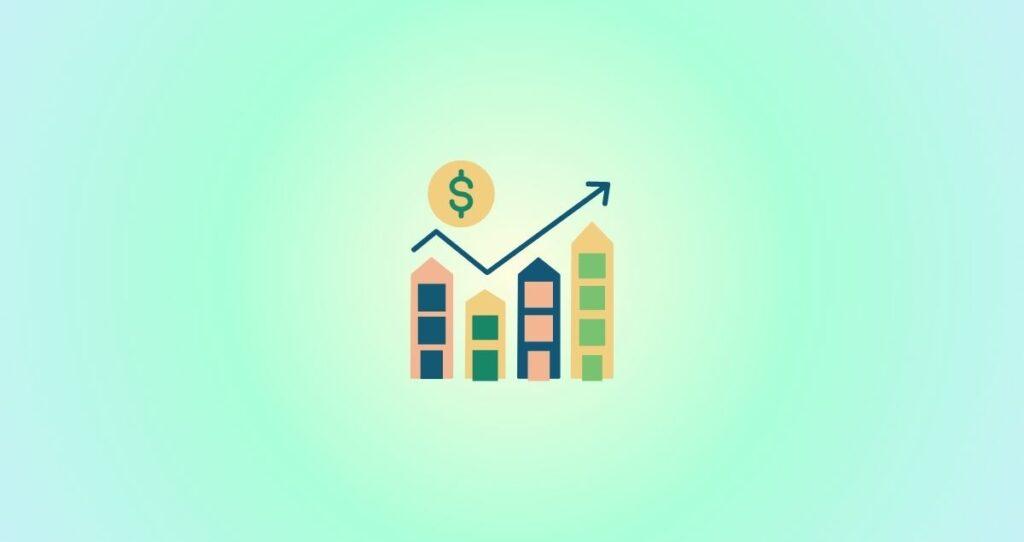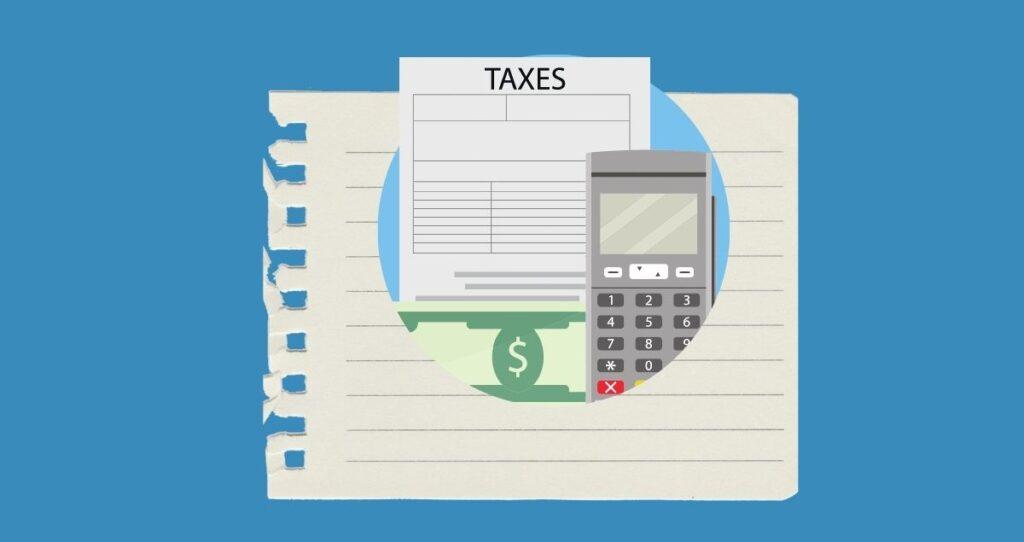Investing in equities is the fastest way to earn easy passive income and build wealth. Knowing the types of stocks to invest in helps you buy the right stocks and form a portfolio that aligns with your investment goals and risk tolerance. For example, investing in income-paying assets and dividend-paying stocks would make sense if you want to maximize revenue from your stock portfolio.
Conversely, if you are interested in growth, the best choice is to create a growth portfolio where 80% of your holdings are in equities. This article will discuss different types of stocks to help you make the right investment decisions.
Without further ado, let’s get started.
1. Common stocks
Common stocks are one of the two major categories of stocks, with the second category being preferred stocks. When you invest in common stocks and the company is liquidated, you receive the remaining assets after debt holders, preferred stockholders, and bondholders are paid.
Here is what to expect when you invest in common stocks.
- The stock suits investors looking to maximize profit, usually in dividends.
- You can elect shareholders
- When you invest in common stocks, you can vote for the company policies
- You will have limited rights to the company’s assets if the company is liquidated. You are the last to receive asset shares during the bankruptcy proceedings.
While investors of common stocks have the right to a company’s assets when liquidated, they are not the first ones to receive a paycheck when a company fails. Debt holders, preferred stock investors, and those holding bonds get paid before you can claim a portion of the company’s assets.
2. Preferred stocks
The second type of stocks investors buy are preferred stocks. When you invest in preferred stocks, you receive a portion of the company’s assets before common stockholders if the company is liquidated.
Here is what to expect when you invest in preferred stocks.
- You get paid dividends before common stocks holders get paid
- When a company goes bankrupt, you get paid first before common stockholders.
- While owning preferred stocks gives you the right to get paid first, you lose the opportunity to vote on the company’s policies or elect a board of directors.
3. Blue-chip stocks
Blue-chip stocks are shares from well-established companies, usually with a large market capitalization. These companies have a history of high revenues and earnings and are usually industry leaders. Being well-established with a large market cap also means blue-chip stocks are less volatile, making them suitable for new investors or those looking to earn passive income while minimizing risk.
An excellent example of blue-chip stocks includes but is not limited to Boeing(BA), Microsoft Corp(MSFT), Pfizer Inc(PFE), Alphabet(GOOGL), Nestle(NSRGY), etc.
4. Penny stocks
If you are new to the stock market, you probably did not know that penny stocks exist or that you can buy stocks for as little as $1. That is right. You don’t need thousands of dollars to invest in the stock market. Typically, penny stocks are those trading under $5 and come with high volatility compared to mid-cap and large-cap stocks.
Here is what to expect when you buy penny stocks.
- Penny stocks come with high-volatility
- You don’t need a lot of money to invest in penny stocks.
- Penny stocks are very speculative and, therefore, risky
- These are good for the money you can afford to lose
- You must use limit orders when investing in penny stocks to avoid risks
- Many penny stocks are from new companies or companies that are losing markets with no positive future outlook
5. Income stocks
Income stocks are shares of companies that focus on issuing regular incomes to investors by paying out higher-than-average dividends or cash. Since many of the company’s earnings are distributed to its shareholders, these stocks do not appreciate as much as growth stocks. Additionally, income stocks have a lower capital appreciation. If you are new to investing, risk-averse, or are in retirement, buying income stocks can boost your passive income and help you pay your bills.
6. Growth stocks
Growth stocks are expected to grow much faster than the market’s growth. They outperform broader markets due to intensive research and new product development, which leads to more sales and revenues. An increase in revenues and the company’s profit fuels a buying frenzy, resulting in higher stock prices.
Growth stocks can usually be spotted during economic expansion and lower interest rates. This is because lower rates and economic expansion encourage research and product development as companies easily find new markets and access capital at lower costs.
For example, technology stocks such as Tesla(TSLA) and Nvidia(NVDA) have recently outperformed markets. Typically, you can spot a growth stock by comparing it with its sector or an ETF that tails the industry.
7. Value stocks
Value investing involves buying equities sold at a discount compared to the companies’ intrinsic values. Investors buy undervalued stocks expecting a higher valuation than the broader market. Buying value stocks is like finding a hidden gem.
While value stocks do not experience high growth, they tend to outperform their respective markets during economic recoveries. Companies in the Healthcare, Energy, and Financial sectors tend to have some of the best-value stocks. To select the best value stocks, investors rely on the company’s financial reports and how well it is established in the industry compared to its competitors.
8. IPO stocks
Before you can buy shares of a company in an open market, it has to be publicly traded. Going public means a company issues stocks through an initial public offering(IPO), allowing the company to be listed at an exchange. It is called an IPO because it is the first time a company transitions from being a private company to being a public company.
Typically, there are two markets involved during the IPO process. The first market is the primary market, when a company works with an underwriter, usually a bank or another financial institution, to establish its books and decide the initial opening price and the number of shares to be listed. This is also the time when other institutional investors can participate in the purchase of the stock.
The secondary market is the second step of an IPO, where the company officially starts selling its shares to the public, and retail investors can buy them. The shares exchanged during the secondary market to retail investors are those from the primary market previously purchased by institutional investors.
IPO stocks are usually those from companies that recently went public and are purchased at a discount to attract more investors. Usually, there are vesting schedules that prevent investors from selling all their shares right after the IPO. These restrictions prevent investors from flooding the market with more shares, which can hurt the stock price.
9. Cyclical stocks
Cyclical stocks are stocks from companies whose performance mimics the economic conditions. These stocks directly follow the four phases of economic performance, including expansion, peak, recession, and recovery. When you buy cyclical stocks, you would expect a higher return on investment during market expansion and a much lower ROI during a contracting economy due to a company’s reduced sales.
For example, companies like Apple and similar luxury items tend to have more sales during expansion and less during recessions, as investors are pessimistic about economic performance and customers have fewer disposable incomes.
10. Non-cyclical stocks
Non-cyclical stocks don’t follow the four phases of economic performance (expansion, peak, recession, and recovery). Instead, they are considered recession-proof proof, as sales from these companies tend to stay consistent regardless of economic conditions.
Non-cyclical stocks usually perform better than cyclical stocks during market downturns. This is because non-cyclical stocks sell products and services that are considered necessities among consumers regardless of economic conditions. For example, consumers buy toilet paper during a recession instead of upgrading to the newest iPhone. This is why companies in personal hygiene, food, healthcare, and drinks are some of the best stocks to buy during a recession.
You might also like: What do you invest in during a recession to make money?
11. Defensive stocks
Defensive stocks sell essential stuff most consumers need in all economic conditions. They are defensive because they perform much better than other sectors during economic contractions. For example, healthcare, utilities, and consumer staple companies make up some of the best defensive stocks.
During recessions, people preserve their capital for essential goods and services. That means they spend less on luxury but ensure that essentials are taken care of.
For example, Procter & Gamble Company(PG) and Verizon(VZ) are some of the best defensive stocks in which to invest money. They offer essential services to consumers, allowing them to perform better even during the recession.
Other types of stocks
We cannot discuss the types of stocks to invest in without mentioning stocks based on market capitalization. Earlier in the post, I mentioned penny stocks, which are usually under 5 dollars in price. Stocks, however, can be categorized using market cap, which measures the company’s total value based on its number of outstanding shares and stock price.
Based on this categorization, you can have micro-cap, small-cap, mid-cap, and large-cap stocks. In the following paragraphs, we will evaluate how these stocks differ and what to expect if you invest in them. The market cap is calculated by multiplying the number of shares outstanding by the stock price.
For example, if a stock trades at $10 a share and has 10 million shares outstanding, the market cap will be $100 million. Let’s see different types of stocks based on market capitalization.
12. Micro-cap stocks
Micro-caps are stocks with market capitalization between $50 million and $300 million. Micro-caps pose a higher risk to investors as they don’t have an established history, their products and services are not tested by the market, and, more importantly, they don’t have enough sales to justify stock growth. For this reason, micro-caps experience high volatility and are riskier than small-cap, mid-cap, or large-cap stocks.
13. Small-cap stocks
Small-cap stocks have a $300 million to $2 billion market capitalization. Investors love small-cap stocks because they have a higher chance of exponential growth and eventually becoming large-cap stocks. These stocks still experience high volatility and carry high risk due to a lack of transparency and liquidity. However, they are safer than micro-caps due to their potential to become large-cap stocks.
14. Mid-cap stocks
Mid-cap stocks are companies with a market cap between $2 billion and $10 billion. They are between large-cap and small-cap stocks in the middle of the stock market, making them better alternatives to small-cap stocks. Mid-cap stocks are great for diversification and growth potential and come with a relatively modest risk compared to micro-cap and small-cap stocks.
15. Large-cap stocks
As the name suggests, large-cap stocks are those of companies with a market capitalization above $10 billion. Such a high market cap means the company is well-established, has high sales and revenues, and is a major player in its industry. Large-cap stocks usually pay out dividends, but they are not good candidates for high return on investment and don’t have the potential for stock growth. These are good for someone who wants to earn a regular passive income or wants to diversify their portfolio while minimizing risks simultaneously.








